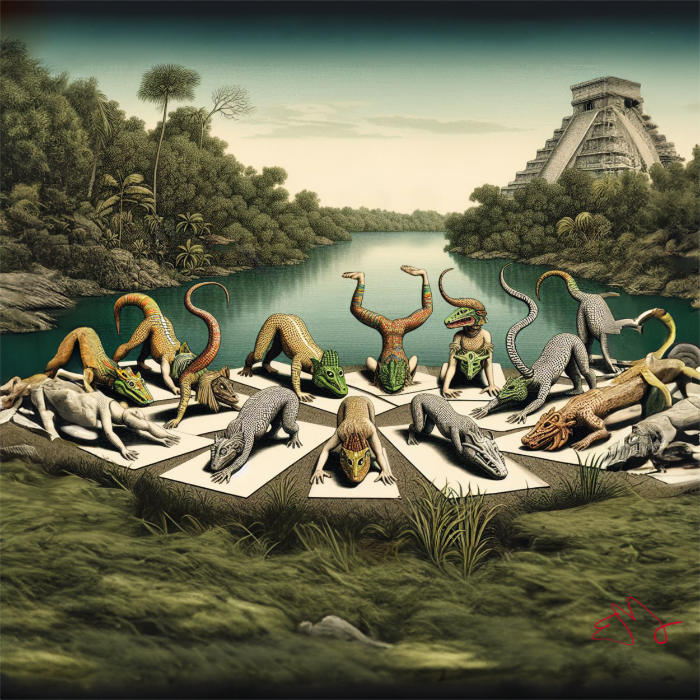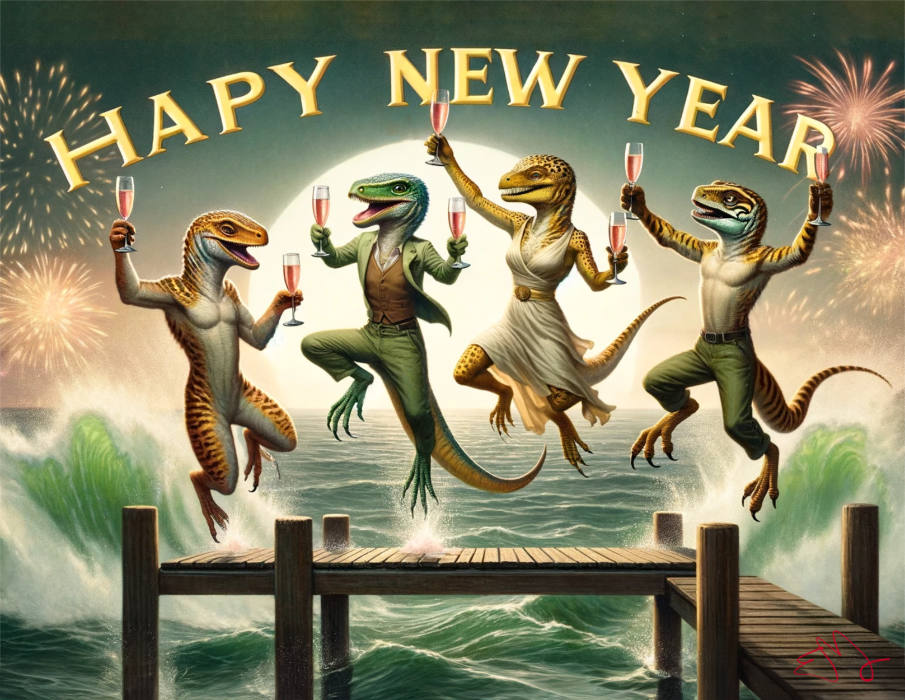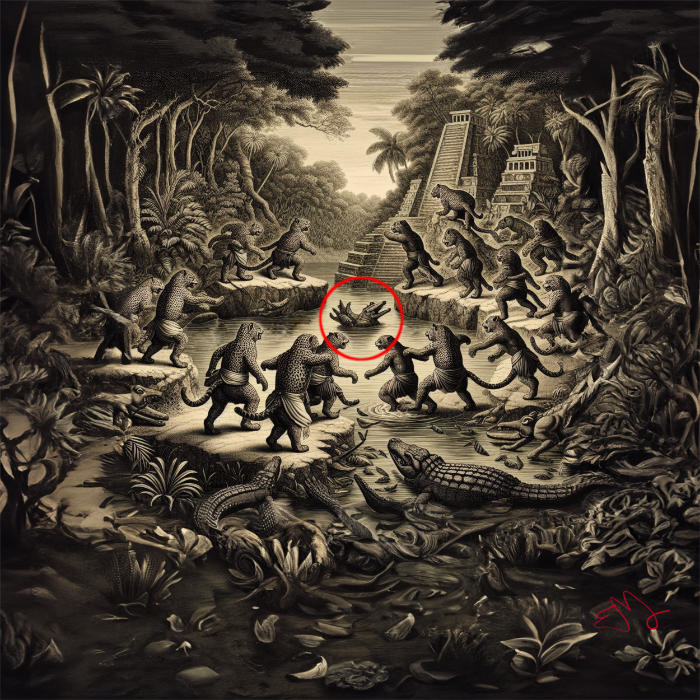

March, 2024

Kreaturae, David Em, 2023
Digital art pioneer David Em’s work has been published and exhibited internationally. He was the first artist to make images with pixels at the Xerox Palo Alto Research Center in 1975. He then went on to build articulated 3D creatures with mainframes at the company Information International Incorporated in 1976. As an Artist-in-Residence at NASA’s Jet Propulsion Laboratory from 1976 to 1988, he constructed some of the first navigable virtual worlds, following that with another Artist-in-Residency at the California Institute of Technology from 1985 to 1988.
Em’s recent creations engage with the myriad possibilities of AI.
JODY ZELLEN: Tell us a little about your involvement with AI.
DAVID EM: The AI experience for me has been very much like working with a writing partner, where we’re working together, I’m putting stuff out there, the system responds to it, the system does unexpected things and comes up with ideas I never would’ve come up with on my own, just like when you’re working with someone in a creative way. It’s changed things for me perspective-wise, one of which is the way I look — not at the pictures — but the process of looking at the pictures
JODY: How is working with AI and the incredible number of images generated?
DAVID: Images come quickly using AI — in literally a minute I’ll make a half-dozen variations on an interesting idea. By the end of a night, I’ll have 200 to 300 pictures to assess. The curating now becomes as important as the actual act of creation.
JODY: Could you share how you created your 2024 New Year’s card, as well as the surprises the AI generated from the elements you fed it?

Hapy New Year, David Em, 2023
DAVID: I’d been playing around with lizard people for a while. By the time I generated the New Year’s card, I had a body of work with lizard people doing different things. I also had images of oceans and waves, so I put them together. I wanted the picture to be celebratory, so I had them drinking champagne out of flutes. It took a few tries to get that to where I wanted it to be. I probably made 40 images of which I selected this one, which was maybe number 25.
But as you can see, the AI sometimes makes mistakes. In the card, “Happy” is spelled “H-A-P-Y”, there’s a missing “P”. I thought that was cool. I liked that, but that isn’t what was supposed to happen. That was the AI. I’ve always loved accidents in art, and so getting that “H-A-P-Y” was a nice dividend.
For another series I began with anthropomorphic jaguars battling in a jungle. There are Maya-looking temples with a body of water between the jaguars, and coming out of the body of water is this crocodile-snake thing. I’d asked the AI to put a couple crocodiles in the scene, and the crocodiles are there, but I hadn’t asked it for the crocodile-snake combination. The AI created this creature, this surrealistic creature that doesn’t exist in real life. I zeroed right in on that. I went, “Whoa, that’s interesting!” Now I’m going down a path that was not predictable. That led to a series of pictures based on creatures that are mashups of other beings.

Balam Wars, David Em, 2023
AI is the tool I always wanted. To be able to say, “Make this happen, make that happen,” is very attractive to me. With the AI, I’m finding I can take still imagery to a whole new level. There’s no end to how many points of view, places you can go, things you can do. The possibilities are endless.
Every single picture we look at triggers associations and neural responses in our brains. A still image is not just a still image, it’s a portal. If you place the right ones around you, you open yourself up to infinity.
